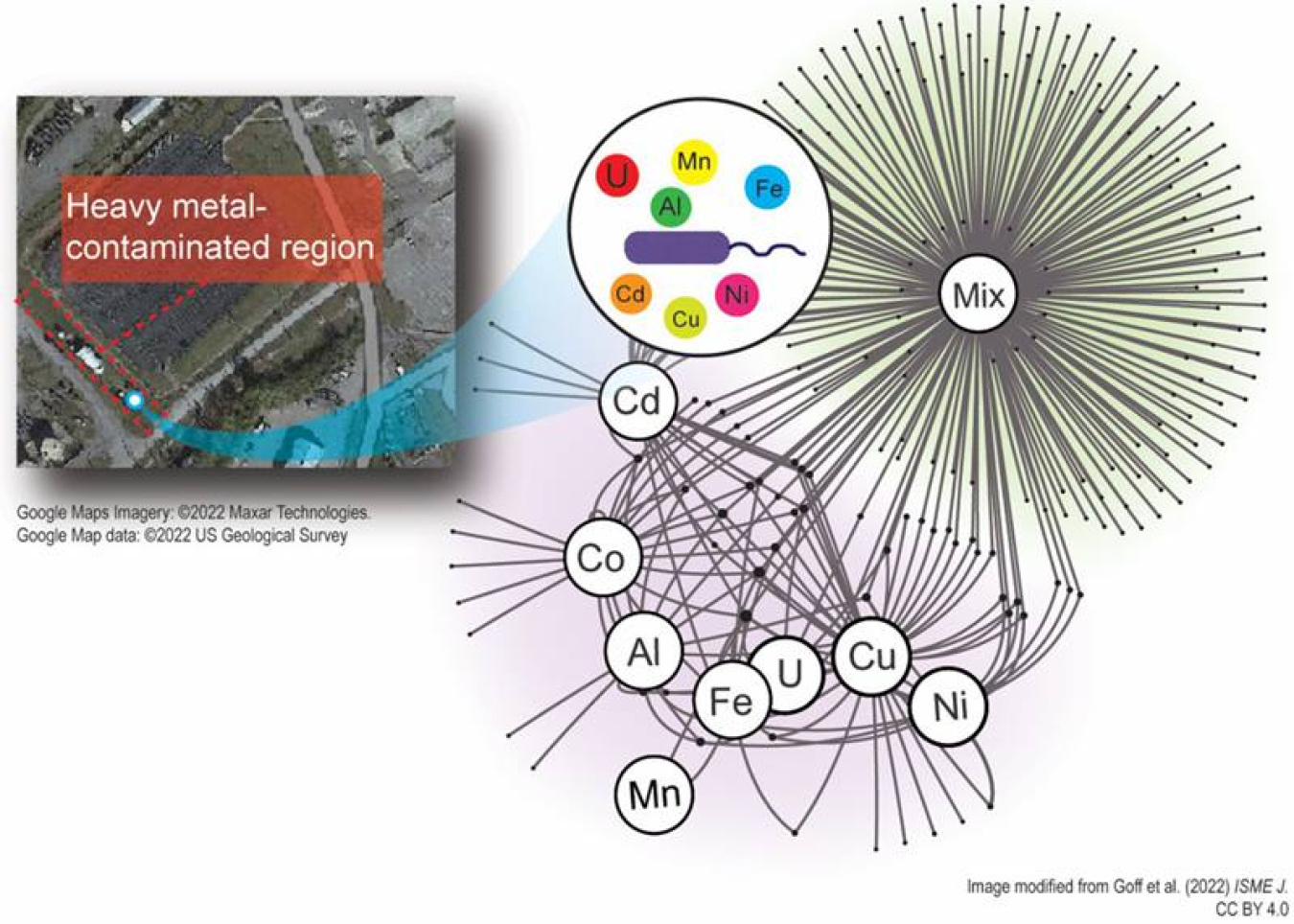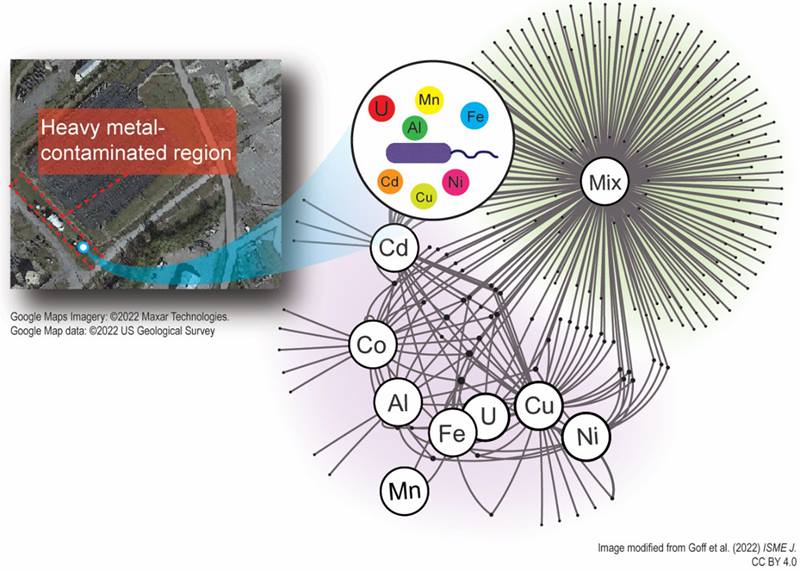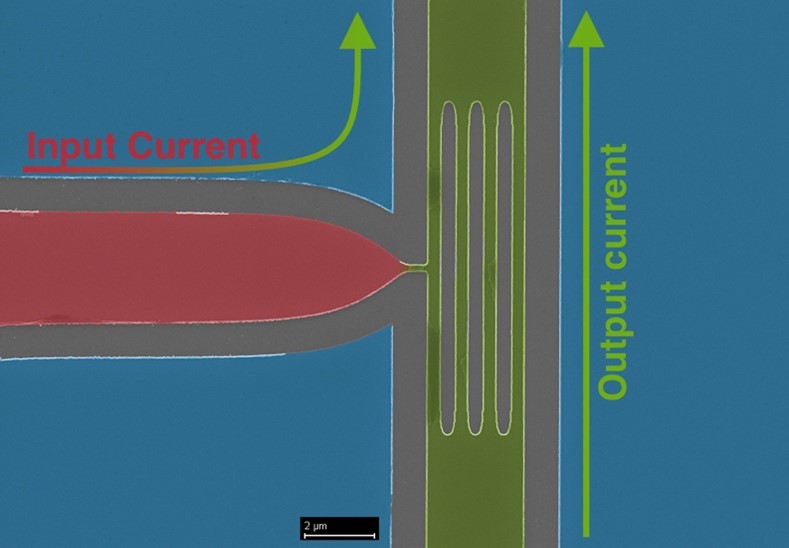
The Science
Pollution of the soil and water with multiple heavy metals is a common problem. However, most studies on the effects of heavy metals on bacteria living in these environments have only focused on one metal at a time. In this study, researchers found that exposing bacteria to a mixture of metals caused their metabolism to change. The researchers did not observe this change when bacteria grew with just one metal. Experiments suggest that the presence of several metals caused the cells to “think” that they were starved for iron. This is likely to change the way bacteria behave in the environment, because many bacterial enzymes require iron to function.
The Impact
Researchers explored how heavy metal exposure changes the behavior of bacteria living in a polluted environment. Understanding such behavior helps us understand nutrient cycling and pollutant removal or cleanup. The study found that metal mixture exposure disrupts bacterial processes that depend on iron. This is important because many bacterial enzymes involved in nutrient cycling and pollutant cleanup require iron to function correctly.
Summary
Urbanization, agricultural practices, and industrial activities have left numerous global environments contaminated with elevated levels of multiple heavy metals. Elevated concentrations of metals can disrupt microbially-driven biogeochemical cycling. However, few studies have explored the impacts of multiple metals on microbial physiology. This study focused on the subsurface of the Department of Energy Oak Ridge Reservation (ORR) in Oak Ridge, Tennessee. The site contains elevated concentrations of multiple metals and nitrate.
Using a native bacterial isolate that represents a highly abundant species at this site, researchers from the University of Georgia, Lawrence Berkeley National Laboratory, and the Scripps Center for Metabolomics examined the impact of combined metal exposure (eight metals at site-relevant concentrations) through a multi-omics approach. Parallel experiments investigated the impacts of the individual metal constituents. Metal mixture exposure disrupted cell physiology in a manner that was greater than the summative result of the individual metal exposures. Specifically, multiple metal exposure dysregulated iron homeostasis, triggering a canonical iron starvation response. This disruption of iron homeostasis by the metal mixture inhibited the activity of two critical iron cofactor-utilizing enzymes for nitrate removal in the ORR subsurface: the nitrate and nitrite reductases. These results highlight the need to transition from single to multi-metal studies to better assess the impacts of these stressors on native microbial systems.
Contact
Michael Adams
University of Georgia
[email protected]
Funding
This work by ENIGMA (Ecosystems and Networks Integrated with Genes and Molecular Assemblies), a Science Focus Area Program at Lawrence Berkeley National Laboratory, is based on work supported by the Department of Energy Office of Science, Office of Biological and Environmental Research.
Publications
Goff, J.L., et al., Mixed heavy metal stress induces global iron starvation response. The ISME Journal (2022). [DOI: 10.1038/s41396-022-01351-3]
Scraped from https://www.sourcearu.com




